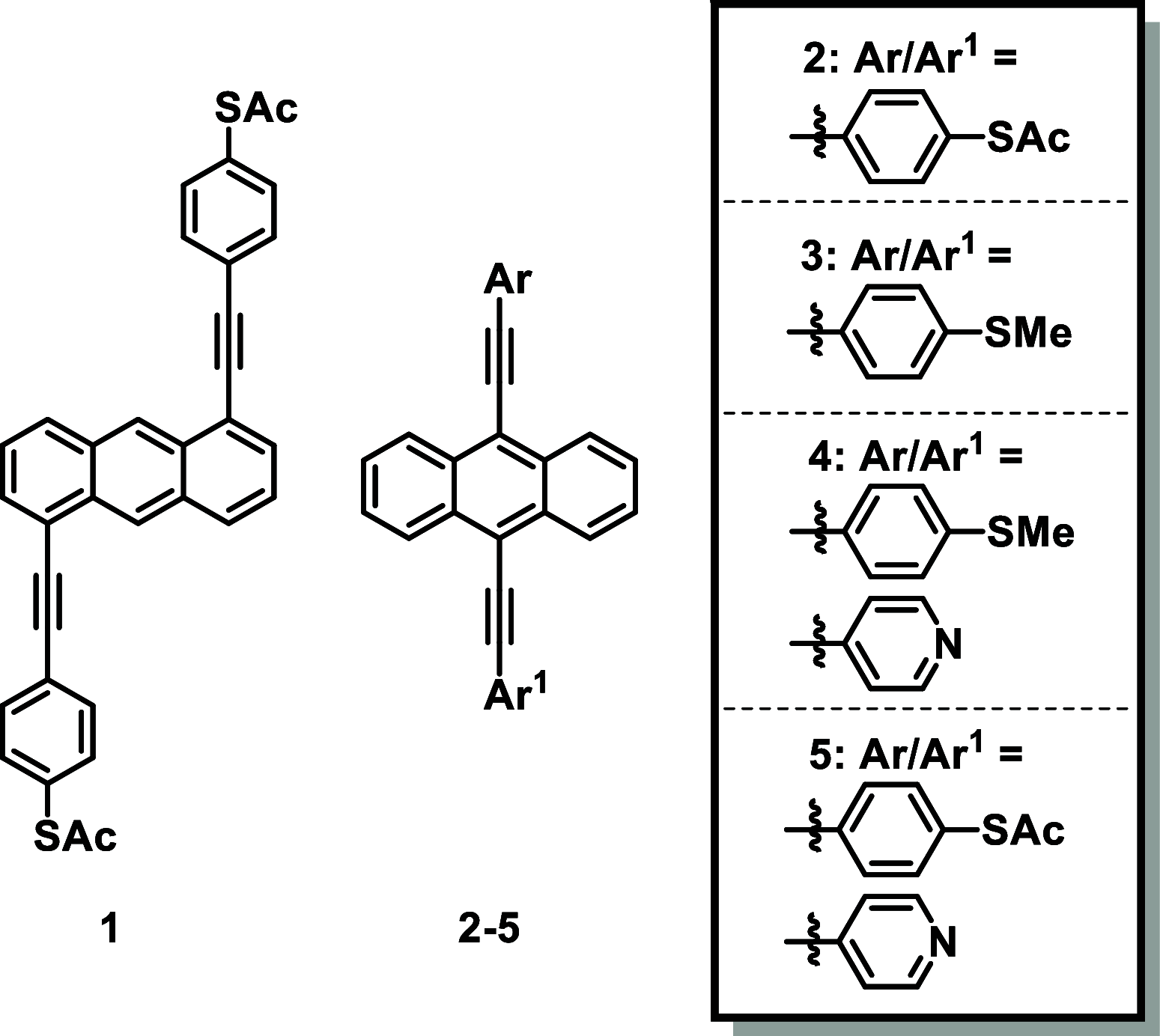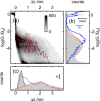Quantum Interference and Contact Effects in the Thermoelectric Performance of Anthracene-Based Molecules
- PMID: 37113454
- PMCID: PMC10123663
- DOI: 10.1021/acs.jpcc.3c00069
Quantum Interference and Contact Effects in the Thermoelectric Performance of Anthracene-Based Molecules
Abstract
We report on the single-molecule electronic and thermoelectric properties of strategically chosen anthracene-based molecules with anchor groups capable of binding to noble metal substrates, such as gold and platinum. Specifically, we study the effect of different anchor groups, as well as quantum interference, on the electric conductance and the thermopower of gold/single-molecule/gold junctions and generally find good agreement between theory and experiments. All molecular junctions display transport characteristics consistent with coherent transport and a Fermi alignment approximately in the middle of the highest occupied molecular orbital/lowest unoccupied molecular orbital gap. Single-molecule results are in agreement with previously reported thin-film data, further supporting the notion that molecular design considerations may be translated from the single- to many-molecule devices. For combinations of anchor groups where one binds significantly more strongly to the electrodes than the other, the stronger anchor group appears to dominate the thermoelectric behavior of the molecular junction. For other combinations, the choice of electrode material can determine the sign and magnitude of the thermopower. This finding has important implications for the design of thermoelectric generator devices, where both n- and p-type conductors are required for thermoelectric current generation.
© 2023 The Authors. Published by American Chemical Society.
Conflict of interest statement
The authors declare no competing financial interest.
Figures






References
-
- Volta A.; Banks J. I. On the Electricity Excited by the Mere Contact of Conducting Substances of Different Kinds. Philos. Mag. 1800, 7, 289–311. 10.1080/14786440008562590. - DOI
-
- Seebeck T. J.Magnetische Polarisation der Metalle und Erze durch Temperatur-Differenz. In Abhandlungen der Königlichen Akademie Der Wissenschaften zu Berlin; Reimer G., Ed.; Königlichen Akademie Der Wissenschaften zu Berlin: Berlin, 1822; pp 265–373.
-
- Telkes M. The Efficiency of Thermoelectric Generators. J. Appl. Phys. 1947, 18, 1116–1127. 10.1063/1.1697593. - DOI
-
- Cullen J. M.; Allwood J. M. Theoretical Efficiency Limits for Energy Conversion Devices. Energy 2010, 35, 2059–2069. 10.1016/j.energy.2010.01.024. - DOI
LinkOut - more resources
Full Text Sources
Miscellaneous
